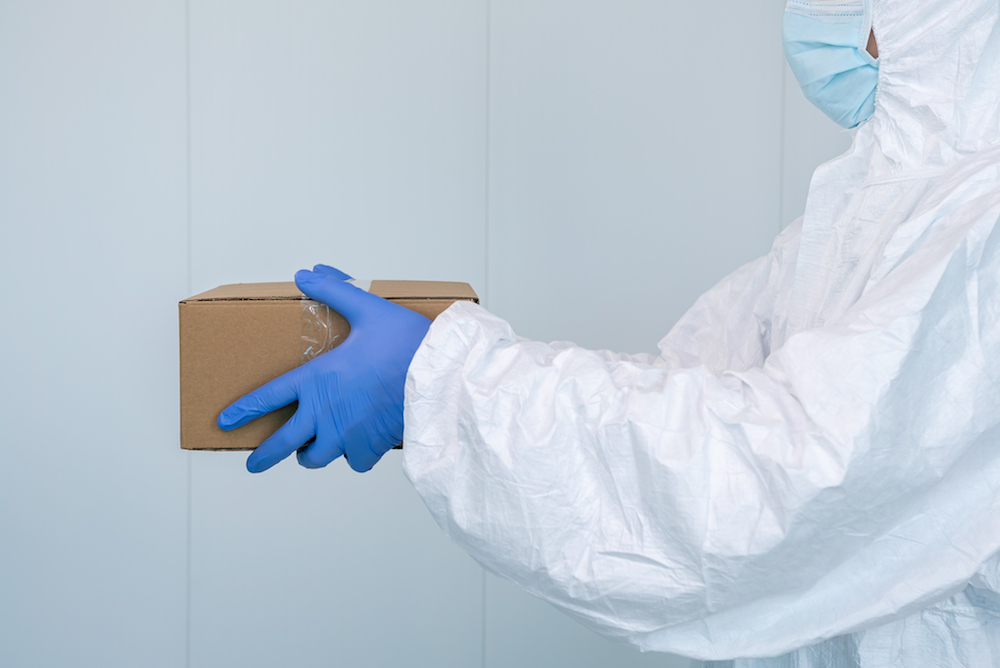There are times when it is important to continuously monitor the temperature of fragile and perishable specimens while in transit – to name a few examples: organ transplants, rare or unique tissue samples, COVID vaccines. The reason is simple: If the temperature is elevated mid-transit, the tissue will begin to die, and the vaccine will lose its efficacy.
Traditionally, data logging temperature probes were included in the insulated shipping container and then examined at the destination to see if the temperature stayed within acceptable bounds during the shipment. This enabled surgeons, medical and/or research personnel to verify that elevated temperatures had not damaged or impaired the contents of the shipping container.
The problem with this approach is that it can sometimes be a matter of too little, too late. A temperature issue that started hours ago but was only discovered minutes ago upon arrival could leave behind room for problems to flare up and cause devastating results. This can be truly life and death consequences in the case of organ transplants or rare blood types, or the hindrance of research efforts to fight disease and cancers in the case of viruses, bacteria, genetic materials or cancer cells shipped between researchers.
This explains the rise of a more proactive approach: real-time, in-transit temperature monitoring.
The Shift Toward Real-Time, In-Transit Temperature Monitoring
Currently, real-time, in-transit temperature monitoring is possible using the cell phone network to transmit temperature readings as they are measured. In turn, the shipper can be notified that the package is experiencing elevated temperatures in time to take remedial action — whether it comes in the form of repairing a damaged carton or adding more ice or dry ice, for instance — so the temperature returns to acceptable levels before the tissue is damaged.
What’s Needed for Real-Time, In-Transit Temperature Monitoring to Work
Real-time, in-transit temperature monitoring requires three key elements:
- The proper temperature sensor
- The ability to transmit temperature data over the cell phone network
- The ability to analyze temperatures in real time and issue alerts to appropriate parties if temperature limits are breached
The choice of temperature sensor will depend on the desired temperature range during transit.
Let’s use the Pfizer COVID vaccine as an example. This vaccine famously needs to be kept at -70℃ or colder during transit, which precludes battery-operated sensors inside the shipping carton (batteries stop working at about -60℃). The sensor therefore must have a wire probe that is inserted in the shipping box, located alongside the vaccine capsules, and the electronic portion of the sensor must be outside the shipping box. When several boxes are shipped together, each box will require its own sensor and electronics module.
The electronics module includes a wireless transmitter in order to send temperature readings of its box contents to a common “relay station” that is equipped with a cell phone modem. Often referred to as a gateway, the relay station receives temperature readings from all the shipping boxes in the truck or large shipping container, and forwards the temperature readings over the internet to cloud-based servers where they are logged and analyzed.
Oftentimes, the gateway includes a SIM card so that it can transmit readings over the cell phone network to the cloud-based servers. Aside from maintaining a complete record of every temperature reading taken during transit, the cloud servers also compare the readings to the pre-established temperature limits, and if the limits are exceeded, the servers immediately send out alert notifications to all appropriate personnel to let them know there is a temperature issue in the shipment.
Ideally, a quick inspection of the shipping box will identify the damage or other issue that is causing the temperature to exceed safe temperatures, and it can be repaired in transit. If the box cannot be repaired, all parties will know which box had the temperature excursion, and then, based on actual temperatures recorded prior to delivery, know if the vaccines can be used within the time limits set for the thawed vaccine.
Effective Real-Time, In-Transit Temperature Monitoring
Real-time, in-transit temperature monitoring is only as effective as the system that supports it. The system must be able to: a) provide immediate notice of a problem so it can be addressed before permanent high-temperature damage is done to the shipment, and b) identify if the temperature excursion was mild enough that the contents can be used in a non-planned manner (e.g., use a thawed vaccine within the proper time frame).
The CORIS real-time, in-transit temperature monitoring system meets these needs. With defined thresholds established as benchmarks, smart alerts will be sent out in real time to the appropriate parties if temperatures inside shipping boxes move outside of acceptable bounds. These early warnings give you the means to respond faster to issues, and in doing so, prevent devastating losses.
To learn more about our real-time temperature monitoring system, contact us today.





